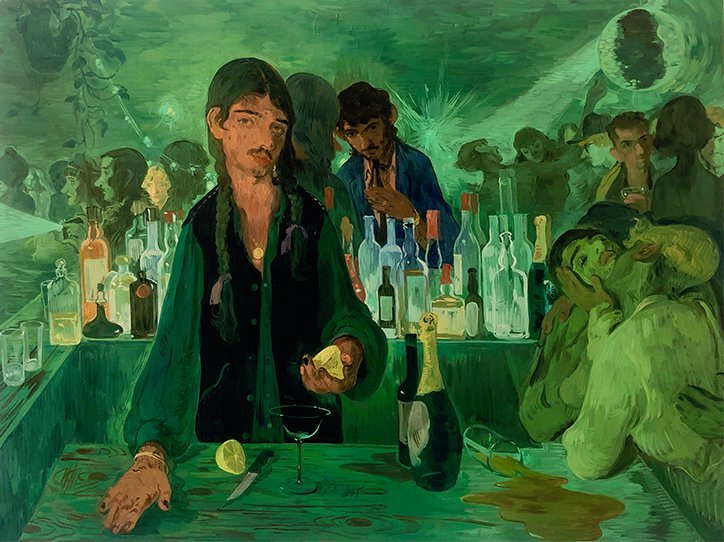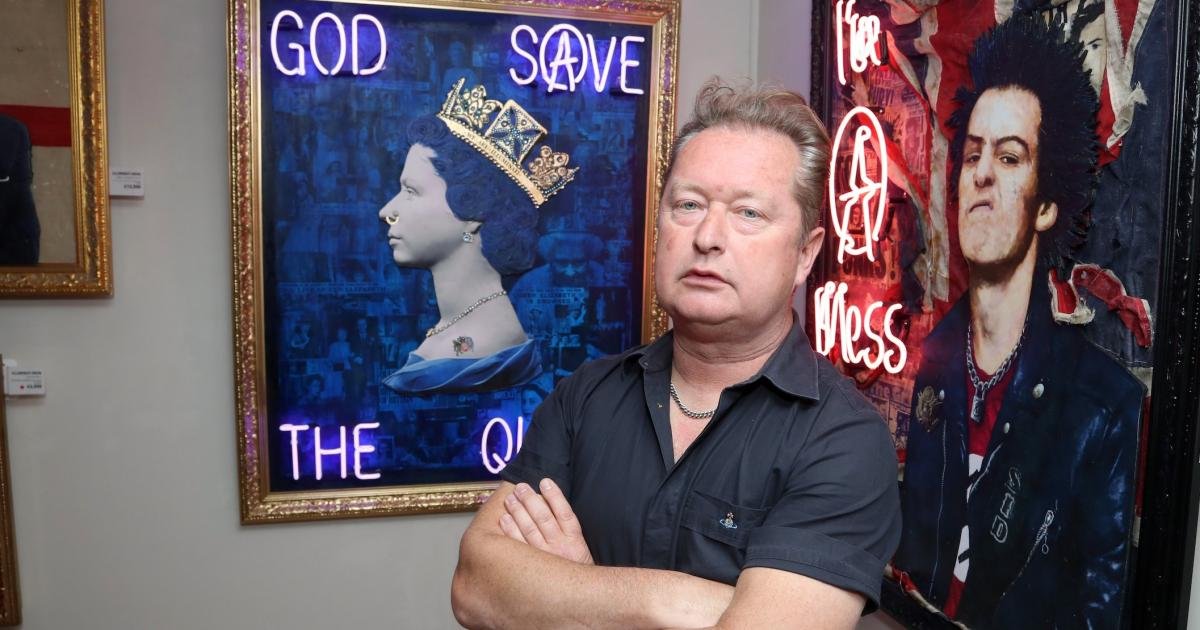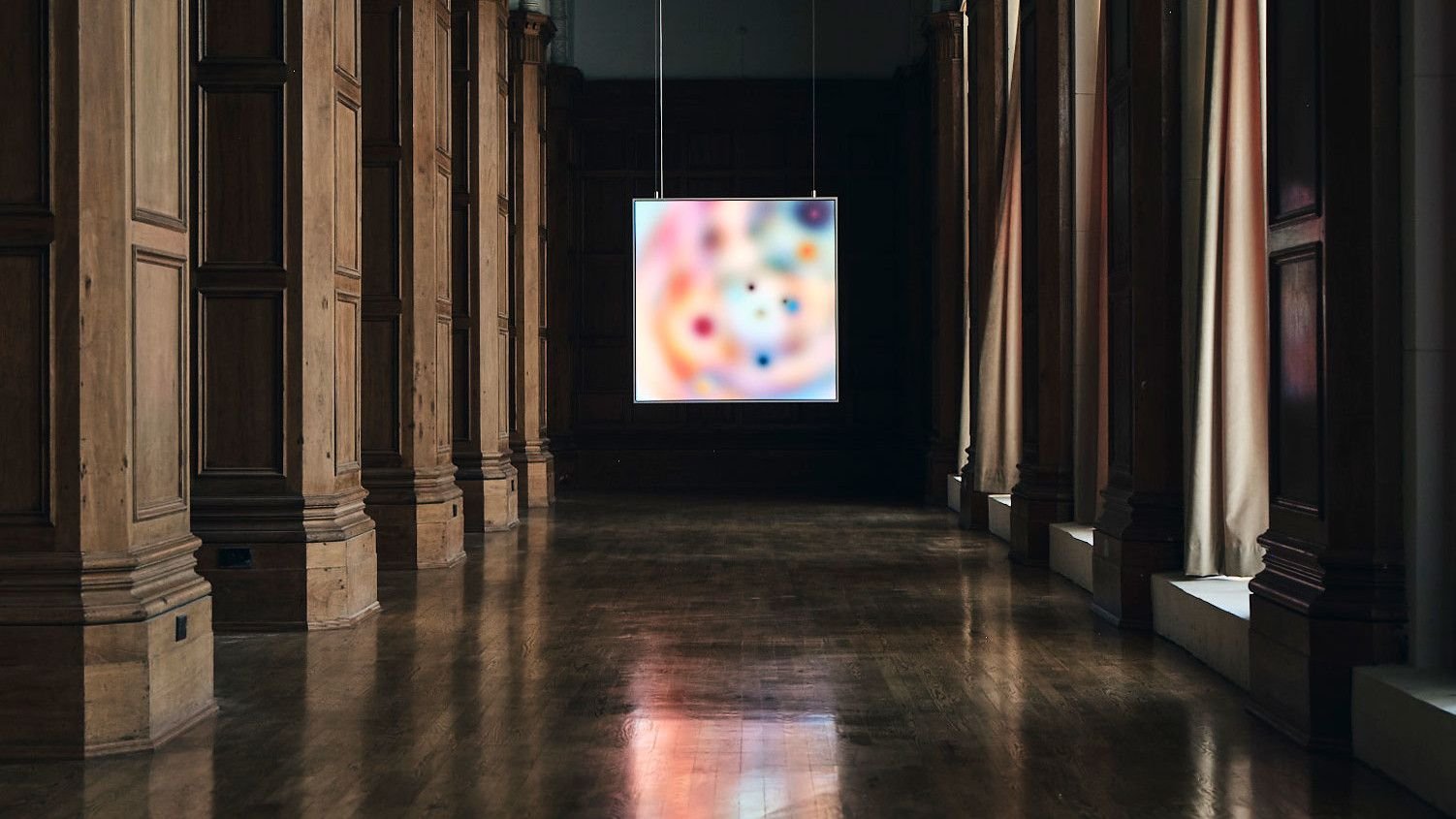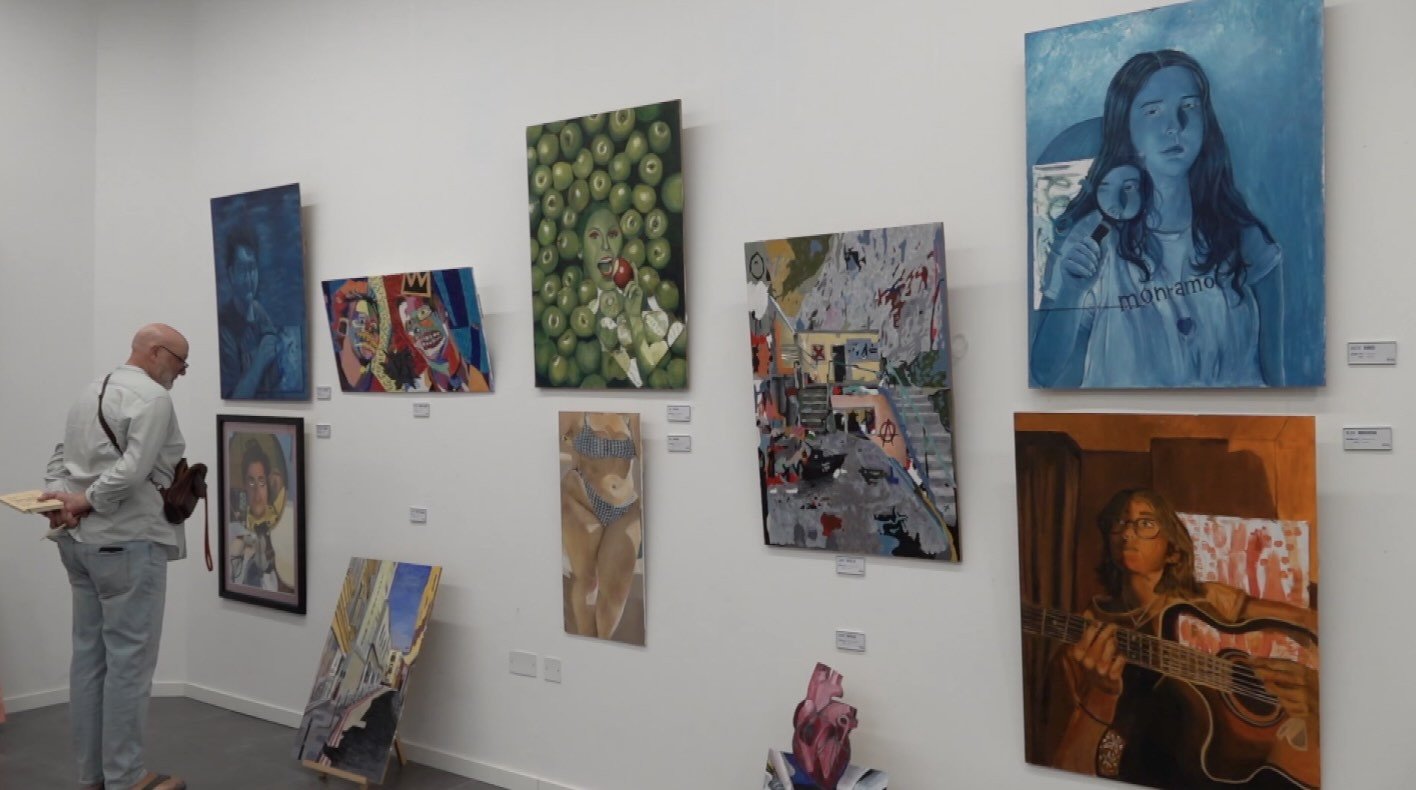“I was a freak case,” says Pakistan-raised and New York-based artist Salman Toor, while reminiscing about his creative upbringing. Having constantly drawn during his childhood, he reminds himself of a time where he used to put pen to paper, producing what he thought was “beautiful women with very long hair.” Despite his parents pushing him to draw what could be defined as stereotypically masculine objects – such as “tanks, sports cars and fighter jets” – Salman positively refrained and stuck to his ways. “I drew a bus rushing past,” he recalls, “with a lovely made-up lady’s head sticking out of the window and a fierce mane of locks flowing in the buses wake.”
He then proceeded to develop his style by his own methods, creating work that is breathtakingly detailed. Intricate brush strokes steer the viewer on a journey through spotlight scenes of friendship, love and solemn moments with technology. No less an amalgamation of the modern world we live in, Salman also draws from his experiences of moving from Pakistan. “I moved from Lahore to a small town called Delaware in Ohio, before I moved to New York City. In Ohio there were cornfields and churches, frats and sororities, arts and alternative living compounds; I found my community in a hippy commune,” he says. Later, upon moving to NYC after college and before going to Pratt University, he was exposed and summoned to the influences of the “Napoleonic grandiosity of Kehine Wiley’s male figures”, plus the “pale mannerism of John Currin and the Philip Guston-vibe of Nicole Eisenmann.”
Salman moved to the West and decided to go against the typical modern influences afloat within the art world. “Instead of moving with the times, I wanted an academic education in painting,” he explains. “I wanted to be as good as the white old masters. In fact, I was happy only when I could pretend that I was a 17th or 18th century painter living in Madrid, Venice or Holland.” The history associated with painting – such as racism, colonisation and slavery – didn’t deter Salman from pursuing and achieving what he loved to do. Instead, he uses these references as his catalyst.







